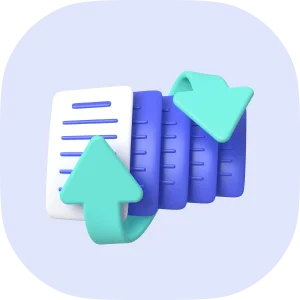🌐 Summarizing Website: How to Use It?
Academic writing is based on summarizing and reconsidering past research and hypotheses. This summarizing tool is helpful in your scholarly aspirations as it is a free solution for indirect quotes and other reworded material.
What is the best thing about it?
Its simplicity.
Here’s how to use the tool.
📝 What Is Summarizing & Why Is It Important?
A summary means conveying the meaning of the source text using different (usually more common and easier to understand) language. It is a shorter version of the original written to be included in a separate text. As an independent genre, it serves to save the readers’ time and effort.
Summarizing is important because:
-
It adds validity and authority to your writing. How does reassurance work? Simply put, you mean, “I believe it because several eminent scientists thought the same way.” What could be more convincing?
-
It allows extracting the essentials. As a rule, you need only a tiny part of a referenced source, not the entire piece, chapter, or paragraph. Any research is a synthesis of other people’s findings. Summarizing allows for balancing your thoughts with the important specifics of the referenced literature. This technique also eliminates the need for your audience to read all the items from your bibliography list. It gives exhaustive information on the issue using as few words as necessary.
-
It makes complicated things more straightforward. Summarizing provides only relevant and easy-to-digest information. Meanwhile, it also enhances your understanding of the studied concept. While condensing the original message, you’ll have to break it into smaller, manageable parts. The simpler you make them, the more reader-friendly your text will be, and the clearer the subject will become to you.
-
It helps to credit the source as many times as necessary. Recall the last time you wrote a theoretical part of a research paper. Now, imagine how it would look like if you entered a direct quote each time you wanted to mention another scholar’s idea. How many pages would it take to insert all those words? You cannot avoid referencing the bibliography items without plagiarizing. But you can do make these instances shorter and more integrated into your text.
-
It allows taking a fresh look at old ideas. No matter how unbiased you intend to be, all the ideas you take from other sources take a new form in your text. They merge with your own considerations and with the facts from other literature. Shedding this new light on the old theories is the most valuable thing a researcher can give to science.
-
It demonstrates your information-processing skills. The importance of this benefit is hard to underestimate if you are a student. The tutor expects you to demonstrate multiple qualities critical to a young researcher. Summarizing provides the details that are the most relevant to your research question.
-
It gives the essence of the piece without reading it. A summary is aimed to convey the key ideas of an essay or research paper appealingly and understandably. A literature review saves much time from unnecessary research and reading. Thus, your work may be helpful to other people.
👍 What Is a Good Summary?
A good summary is:
📑 Summarizing Techniques
Below you’ll find 2 summarizing techniques for shorter and longer pieces.
For Short Texts (up to 10 Pages)
-
Summarize each paragraph in one sentence.
-
Formulate the meaning of the entire text in a single sentence.
-
Distribute the sentences among future paragraphs. Whenever you can group them under a single idea, do so.
-
Using the phrases mentioned above as topical sentences, supplement the paragraphs with the necessary details.
-
Make the necessary rearrangements for clearance and cohesion.
-
Add transitions.
For Long Texts (More than 10 Pages)
-
Divide the text into major sections grouping the paragraphs under a common topic.
You can use the existing subheadings of the original. -
Write a one- to three-sentence summary of each part.
-
Summarize the entire text in one sentence (you can take it from the original thesis statement).
-
Complete the paragraphs: one for each subheading. Start with a topic sentence and follow it with an explanation.
-
Rewrite the result as necessary to get a smooth and complete text. Delete the minor and self-repeating points.
-
Add transitions.
Thank you for reading this article! If you need to generate a thesis statement for your paper, try our thesis-generating tool.
❓ Summarizing Websites FAQ
❓ Why Is Summarizing Important?
Summarizing is important because it gives only relevant data on the topic. Thus, it saves reading time and helps to find the necessary information with less effort. Summarizing is beneficial to the writer as it trains their data-management skills. It teaches them to describe complex matters in simple terms.
❓ What Is the First Step in Summarizing Material?
The first step in summarizing any material is reading the passage. At this stage, you will get a general idea of the original text and mentally divide it into sections. Summarizing while reading is unprofessional and ineffective. That’s why you should first read the text and only then proceed to other actions.
❓ How Is Paraphrasing Different from Summarizing?
Summarizing provides more freedom to the writer, as you can ignore the original structure and order of ideas presented. You are free to decide which facts to include and which to omit. On the contrary, paraphrasing requires you to preserve all the details of the source text.
❓ What Is the Best Summarizing Website?
There are dozens, if not hundreds, of summarizing websites. Some are general-purpose, and others are intended for specialized use. We recommend using our tool as the best summarizing site for academic projects and other scholarly purposes. It contains all the necessary functions and is intuitively clear to the user.
Updated:

